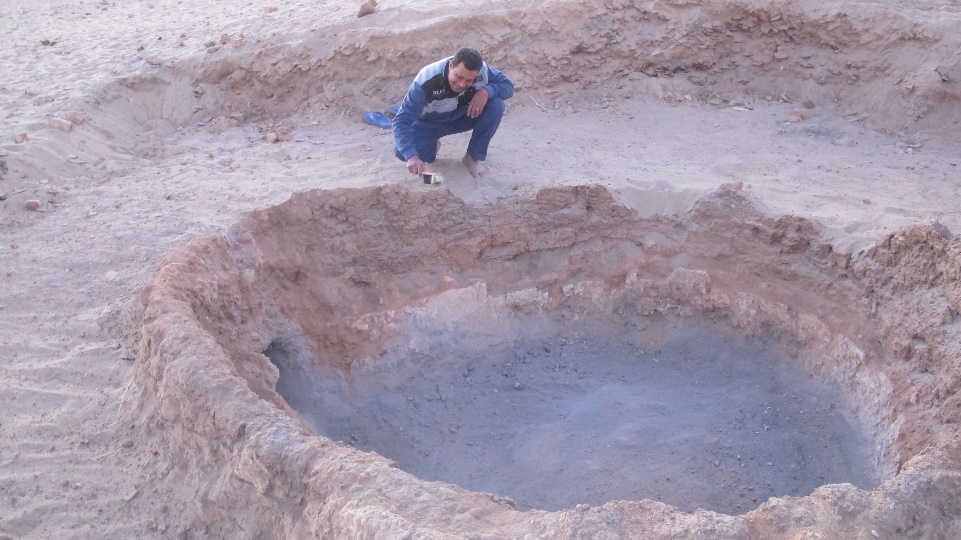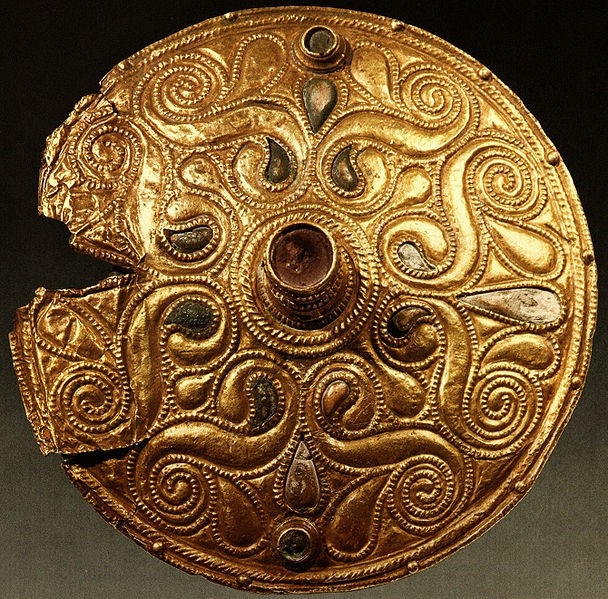Past Events
Interested in Cotsen events? Sign up for our mailing list.Speaker: Dr. Mohamed Ali, American Sudanese Archaeological Research Center
The Meroitic kingdom is an ancient kingdom in Nubia, located and flourished at the confluences of the Blue Nile, White Nile and River Atbara, in Sudan. Researchers, with no convincing evidence, have argued that tribal movements within the Meroitic territory and the Axumite invasion from the east (Ethiopia) caused the collapse of the Meroitic state. Here I consider the nature of the political economy in order to provide a better understanding of the collapse and the regeneration of the Meroitic state. I employ theoretical frameworks to the collapse of the Meroitic state, c. 350 B.C.-A.D.350, and regeneration during the Post Meroitic period (4th century to 7th century AD). I investigate how the nature and the manifestation of Meroitic sociopolitical power changes during and after the collapse of the Meroitic state.
Mortuary practices and settlement patterns studies are used here to determine changes in local identity and social roles that reflect the integration and/or lack of integration of the hinterlands in the Meroitic and Post Meroitic sociopolitical systems. I demonstrate that local elites on the east bank and east hinterland re-established a polity based in the old Meroitic settlements and redeployed Meroitic symbols to legitimize and reinforce their authority and power.
The locals on the west bank were not well integrated into the Meroitic sociopolitical system. They eventually became a real threat that impacted the Meroitic central power together with the Axumite threat from the east and the economic recession in the Mediterranean market. Elites on the west bank would have taken advantage of the weakness of the Meroitic central power and manipulated trade networks and formed local alliances that led to political and economic independence.

Contact Matthew Swanson
Email mswanson@ioa.ucla.edu
Phone
Speaker: Dr. James Snead, Associate Professor, Department of Anthropology, Cal State University, Northridge
In 1913 Elizabeth Deuel, a student of archaeology and resident of Los Angeles, wrote a letter to a friend describing a situation that modern readers can only interpret as sexual harassment. Coded with the discretion of the age, her brief account nonetheless resonates to modern readers conscious of the complex history of this topic in the field of archaeology.
The Deuel letter is an example of scattered material in archaeological archives that documents power relationships within communities of interest in American archaeology at the turn of the last century. Her participation and subsequent activities also brought her into contact with several of the principal archaeological figures in the United States, providing considerable insight into the sexual politics of the era. This presentation examines the Deuel case, with reference to the "relevance" of the history of archaeology to issues of considerable relevance in archaeological practice.
Contact Matthew Swanson
Email mswanson@ioa.ucla.edu
Phone 310-825-4169
Speaker: Dr. Stratos Stylianidis, Aristotle University of Thessaloniki
Cultural heritage is our deep soul. It is the unique legacy for all societies worldwide, but at the same time our common responsibility. A value rewards humanity by providing the classical and universal principles. It provides the panhuman context of mutual understanding, respect, liberty and expression. The protection of cultural heritage is a matter for all and its recording and documentation a vital step towards preservation. The first part of this talk addresses the cultural heritage documentation context, the international framework on documentation by international charters and conventions, and the real needs that push organizations and people to operate in this process. Various sensors and platforms, both from image-based and range-based technology illuminate how scientific research and practice, transpose the real object to a 3D model. Commercial and open source tools for data processing, management and representation are presented likewise. The presentation of innovative mobile mapping systems enabling data capture and management for cultural heritage information of various scales, is closing this talk.

Contact Matthew Swanson
Email mswanson@ioa.ucla.edu
Phone
Speaker: Dr. Ashraf Sobhy, Fayoum Inspectorate

Contact Matthew Swanson
Email mswanson@ioa.ucla.edu
Phone
Speakers: Dr. Marilyn Kelly-Buccellati & Dr. Giorgio Buccellati, UCLA
During the last seven years when war has raged in Syria, foreign archaeological projects have come to an almost total standstill. But then, the question arises: what were the presuppositions that, instead of allowing archaeology to disappear or, worse, to be kidnapped by a violent iconoclastic fundamentalism, could have given archaeology an impetus in fostering stronger group identity precisely at a moment of crisis? Our talk will answer this question with reference to the site of ancient Urkesh, where we have had been excavating since 1984. We talked about it already on other occasions, but innovative projects have been burgeoning at a steady rhythm around this site. We will talk about these various new activities, and draw some conclusions about the nature of community archaeology as we have experienced it in ways that were unimaginable only a few years back: it is truly community archaeology "from below," where the "below" includes all of us, the community of archaeologists alongside the many other communities that find themselves nurtured by the distant past embedded in their territory.
Contact Matthew Swanson
Email mswanson@ioa.ucla.edu
Phone
Speaker: Dr. Giorgio Buccellati, Professor Emeritus of Near Eastern Languages and Cultures, UCLA
The recent publication of a book on theory (same title as this talk, Cambridge 2017), has its roots in a long and intense confrontation with the experience of field work, which began for me in Iraq and Turkey in the '60s: it was a very practical experience which elicited, by contrast, a strong interest in theory. It was also the beginning of the digital era, which we marked with the introduction of a bulky pre-PC computer to Terqa in 1978, the first of its kind in Syro-Mesopotamia: such an early start, too, conditioned my subsequent work in this area, with an emphasis on modes of thinking beyond technology per se. Starting from these conditioning factors, I will outline the basic points of the book, as defined in the subtitle: structural, digital and philosophical aspects of the excavated record. I will then describe the structure and goals of the accompanying website, with an invitation to collaborate in its continued operation.

Contact Matthew Swanson
Email mswanson@ioa.ucla.edu
Phone
Speaker: Professor Duan Qingbo, Northwest University School of Cultural Heritage, Xi'an.
Followed by a concert of Chinese and Persian music by UCLA faculty, Li Qi and Amir Pourjavady.
Terra-cotta warriors, bronze chariots and horses are among the iconic artifacts associated with China's first imperial dynasty, the Qin (221-206 BCE). Chinese archaeologist Duan Qinbo shares new evidence that suggests the material culture and social governance of the Qin may not be solely indigenous Chinese, but may also have come to China along Central Asian trade routes.
*Presented by the UCLA Fowler Museum, Cotsen Institute of Archaeology, Department of Ethnomusicology, Boethius Initiative, Center for Chinese Studies, Confucius Institute, and Pourdavoud Center for Study of the Iranian World.
Contact
Phone
Speaker: Dr. Peter Wells, Professor of Anthropology, University of Minnesota

Contact Matthew Swanson
Email mswanson@ioa.ucla.edu
Phone 310-825-4169
Speaker: Dr. Joseph (Seppi) Lehner, Assistant Professor, Department of Archaeology, University of Sydney
The ship that sank at Cape Gelidonya (Turkey) ca. 1200 BC is one of only three known wrecks dating to the Late Bronze Age, though this was an era of intensive overseas exchange in the Mediterranean. It was also one in which metals had an importance like that of oil today, and the cargo found on the seabed at Cape Gelidonya consists primarily of copper and tin in the form of ingots and ingot fragments, along with broken bronze tools intended to be remelted and refashioned into useful implements. The ship likely belonged to a tinker traveling a circuit along the coasts of Cyprus, Syria, and southern Anatolia.
The shipwreck was among the first to be scientifically excavated, when in 1960 George Bass announced to the world the exciting discoveries he made. Newer discoveries at Cape Gelidonya have now shed new light onto this important site, and cutting-edge scientific analyses of the cargo now gives us brand new insight into Bronze Age technologies and trade networks. Even more, we get a view into the life of a maritime metal at the end of the Bronze Age when the famous civilizations and empires of the Mediterranean and Near East experienced significant upheaval. Here Dr. Lehner presents the Cape Gelidonya shipwreck in its cultural and historical context, revealing how maritime cultures and trade in this crucial time period functioned and what new problems now emerge in the study of ancient societies in this dynamic region.
Contact Matthew Swanson
Email mswanson@ioa.ucla.edu
Phone 310-825-4169
Speaker: Gazmend Elezi, Ph.D. Candidate, Cotsen Institute of Archaeology, UCLA
The large amount of ceramic sherds in archaeological contexts and the variety of ceramic wares, shapes and dimensions during the Late Neolithic period in the Balkans is an indication that pottery was involved in many social activities. As such, it is among the best proxies to understand the daily life of Neolithic communities. In this paper, I am going to present the first preliminary results of a multidisciplinary and multidimensional approach of the Late Neolithic pottery from the Korçë region in SE Albania. In order to investigate the sociocultural dimensions of the pottery, I have used a number of methods including typological and stylistic classification, ceramic petrography, X-ray analysis, and residue analysis. The first results of this study show that, although there are significant similarities between different sites, there are also technological, stylistic, and functional differences that characterize the ceramic assemblage of each settlement. The variety of pottery is also evident within each site, while there are some indications for sharing technologies between different media. The potters have used different clay sources or recipes for manufacturing their vessels, while a number of techniques were used for finishing and elaborating their surfaces. Ceramic vessels were also involved directly or indirectly in the extended exchange networks developed in the area during this period. Moreover, some of the ceramic containers seem to have an additional social value that probably was not related to their function as their life was extended by repairing them.
Contact
Phone
- ‹ previous
- 33 of 50
- next ›


